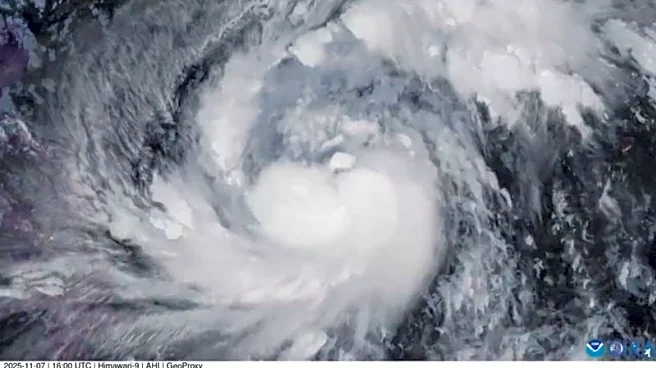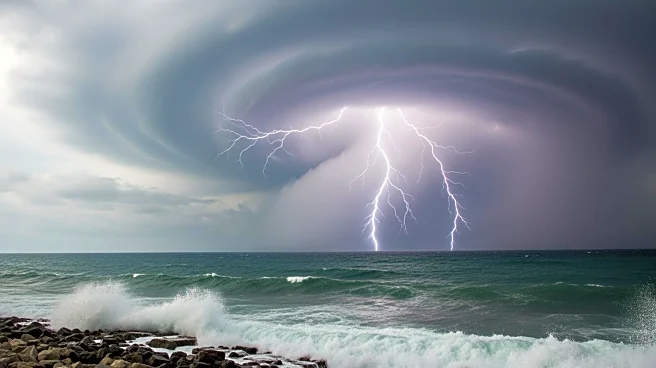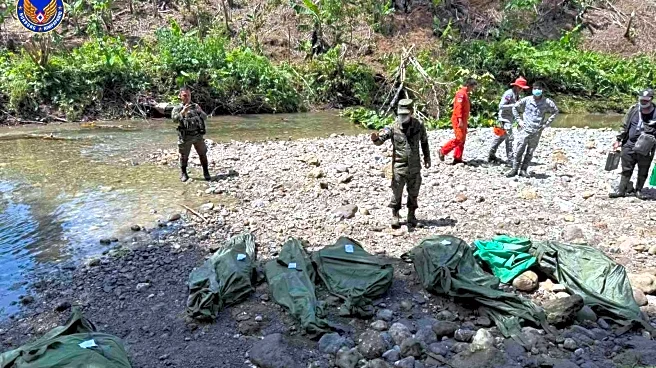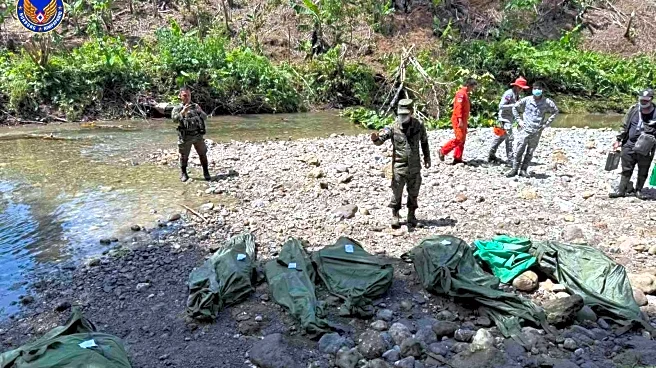What's Happening?
Super Typhoon Fung-wong, the largest storm to threaten the Philippines this year, is impacting the northeastern coast of the country. The storm has prompted the evacuation of tens of thousands of residents
from high-risk areas. The Philippines is still recovering from Typhoon Kalmaegi, which recently caused significant devastation, leaving over 200 people dead. President Ferdinand Marcos Jr. has declared a state of emergency due to the extensive damage from Kalmaegi and the anticipated impact of Fung-wong. The typhoon, with winds reaching up to 115 mph, is expected to make landfall in Aurora or Isabela province. Defense Secretary Gilberto Teodoro Jr. has warned of the storm's potentially catastrophic effects, urging residents to evacuate from areas prone to flash floods and landslides.
Why It's Important?
The arrival of Super Typhoon Fung-wong poses a significant threat to the Philippines, a country already grappling with the aftermath of Typhoon Kalmaegi. The storm's impact could exacerbate the existing humanitarian crisis, affecting millions of people and potentially overwhelming local disaster response capabilities. The Philippines, known for its vulnerability to natural disasters, faces challenges in managing the dual impact of consecutive typhoons. The situation underscores the need for robust disaster preparedness and international support, as the country navigates recovery efforts while bracing for further damage. The economic and social implications are profound, with potential disruptions to infrastructure, agriculture, and daily life in affected regions.
What's Next?
As Super Typhoon Fung-wong approaches, authorities have preemptively shut down schools and government offices in northern provinces expected to be affected. Domestic flights have been canceled, and thousands of commuters are stranded at seaports due to rough seas. The government is coordinating evacuation efforts and preparing for emergency response operations. The United States and Japan have offered assistance, although the Philippines has not yet requested international aid. The focus remains on ensuring the safety of residents and minimizing the storm's impact on vulnerable communities.
Beyond the Headlines
The frequent occurrence of typhoons in the Philippines highlights the broader issue of climate resilience and the need for sustainable development practices. The country's geographic location makes it susceptible to extreme weather events, necessitating long-term strategies to mitigate disaster risks. The situation also raises ethical considerations regarding the allocation of resources and support for affected populations, emphasizing the importance of equitable disaster response and recovery efforts.













